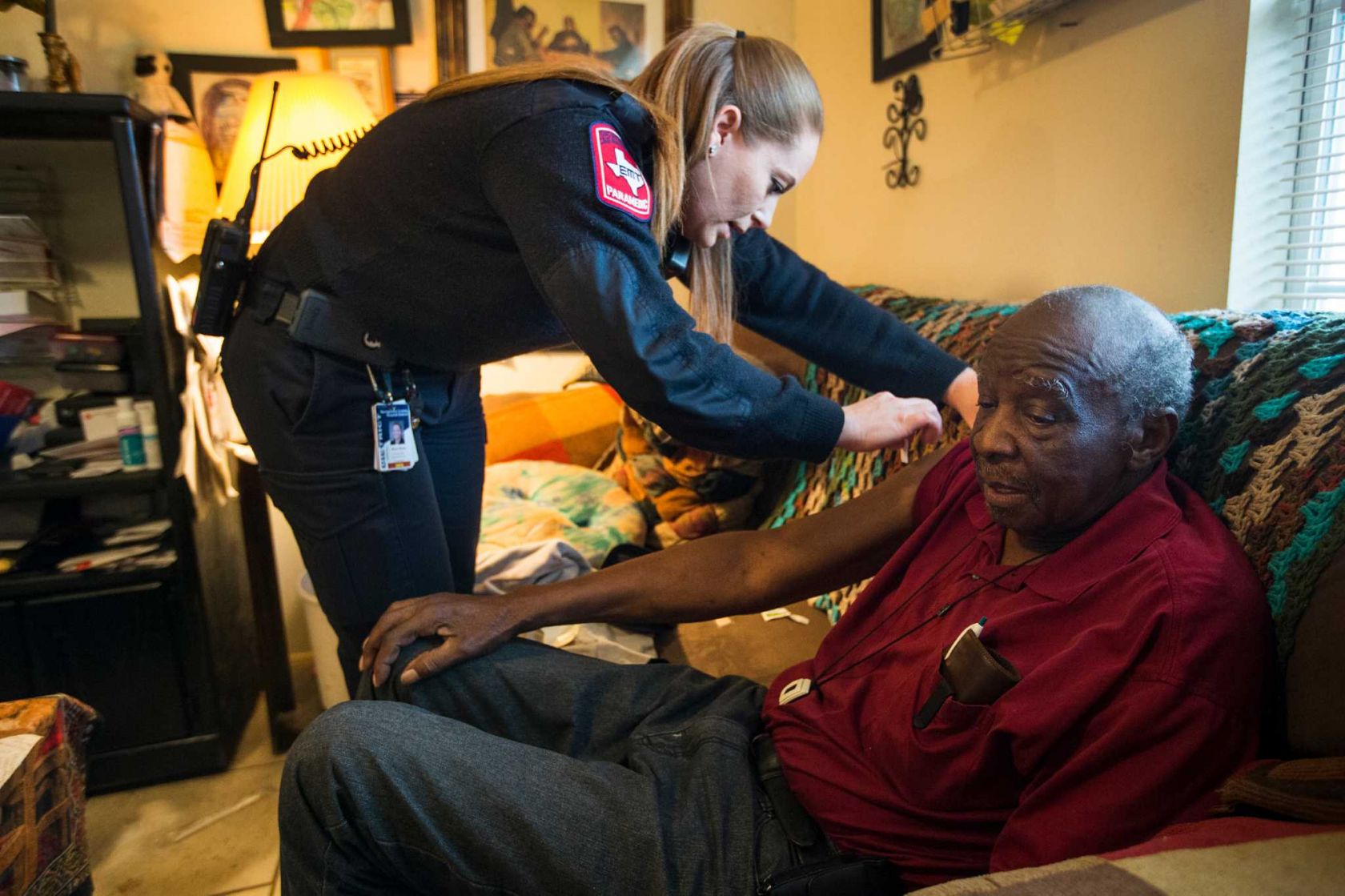Paramedicine and New Models for EMS

911 EMS is an expensive, money-losing venture, and inevitably so. In 2013, the federal 911 clearinghouse reported that the average state made a revenue of $49 million on 911 EMS (National 911 Program, 2013). Nonetheless, the average state spends about $102 million on 911 each year (National 911 Program, 2013). Year after year, 911 proves it costs overwhelmingly more than what it can recover in billing.
Take the city of Baltimore as an example. Baltimore took the unprecedented step of placing a surcharge on all phone bills of 75 cents a month and raised $3.77 million in 2012 to pay for EMS—which would be a major accomplishment had the yearly EMS bill not come out to $6.87 million (Reutter, 2014). The city of Baltimore finds that most calls come from a small population of habitual users who have no other means of transportation for accessing the hospital—a common finding in most EMS services (Reutter, 2014).
Nonetheless, the Affordable Care Act places limitations on emergent care and excessive episodic care. One example is the reimbursement cuts for patients who need readmittal within thirty days of a discharge (Bledsoe, 2016). In this challenging environment of huge costs and decreasing reimbursement, what organized change can be made in response to the reform initiatives taking place in health care?
A broader view of EMS and its conversion into "paramedicine" is well underway. In the case of declining reimbursement for readmittals, some hospitals may contract with EMS providers to check in on patients recently discharged from the hospital to ensure they are recovering well and may not need readmission (California EMS Authority). Other innovators are using EMS providers to reduce costs in a more broad way.
In California, a pilot used paramedics to monitor patients post-discharge, but also for hospice and to monitor patients who were frequent 911 callers and help them connect with a primary care physician (California EMS Authority). Indeed, some services are using paramedics to provide more primary care services, such as TB monitoring or HIV testing, while others primarily expand their use by having paramedics link patients to needed social, psychiatric, or chronic medical referrals (Gerber, 2014).
Nonetheless, some have warned about the use of EMS personnel in expanded settings. Firstly, paramedics are trained primarily in emergency care, and primary care requires much different training and practice (Bledsoe, 2016). Actual attempts to use paramedics to provide primary care to chronic care and other patients in the field have failed due to turnover and the fact that Medicare and Medicaid will not reimburse services carried out by an individual not properly trained or certified to perform them (Bledsoe, 2016). While EMS may have opportunities to profit from types of care other than 911, paramedics do not pose our nation's best answer for reducing episodic care.
Fundamental PALS concepts can be learned through an AHA PALS course. Find the best AHA PALS course in Austin, Texas at Thri Austin - an official local Austin AHA Training Site offering BLS, PALS, and ACLS. While Thri Austin offers same-day AHA certifications with its RQI training system, the Thri network of official AHA Training Sites also features non-RQI AHA Training like Los Angeles Heart Training, which offers official AHA PALS classes in LA and also AHA BLS and AHA ACLS in Los Angeles.
References
Bledsoe, B. (2016, March 14). Community paramedicine: boon or bane for EMS? Retrieved from: http://www.jems.com/articles/2016/03/community-paramedicine-boon-or-bane-for-ems.html
California EMS Authority. (n.d.) Community Paramedic Pilot Project. Retrieved from: http://www.emsa.ca.gov/Community_Paramedicine
Gerber, M. (2014, July 22). How 4 cities are making community paramedicine work for them. Retrieved from: http://www.ems1.com/community-paramedicine/articles/1949030-How-4-cities-are-making-community-paramedicine-work-for-them/
National 911 Program. (2013, July). Review of nationwide 911 data collection. Retrieved from: http://www.911.gov/pdf/Current911DataCollection-072613.pdf
Reutter, M. (2014, February 14). Cost of 911 emergency services far outstrips revenues received. Retrieved from: https://baltimorebrew.com/2014/02/14/cost-of-911-emergency-service-far-outstrips-revenues-received/
Author
CHT Staff
At Chicago Heart Training we believe active medical practice should be supported by a foundation of rigorous research in medicine and health care practice. Our staff engages in regular investigation of trending issues in medicine and provides research-backed opinion articles to enrich your medical tastes.